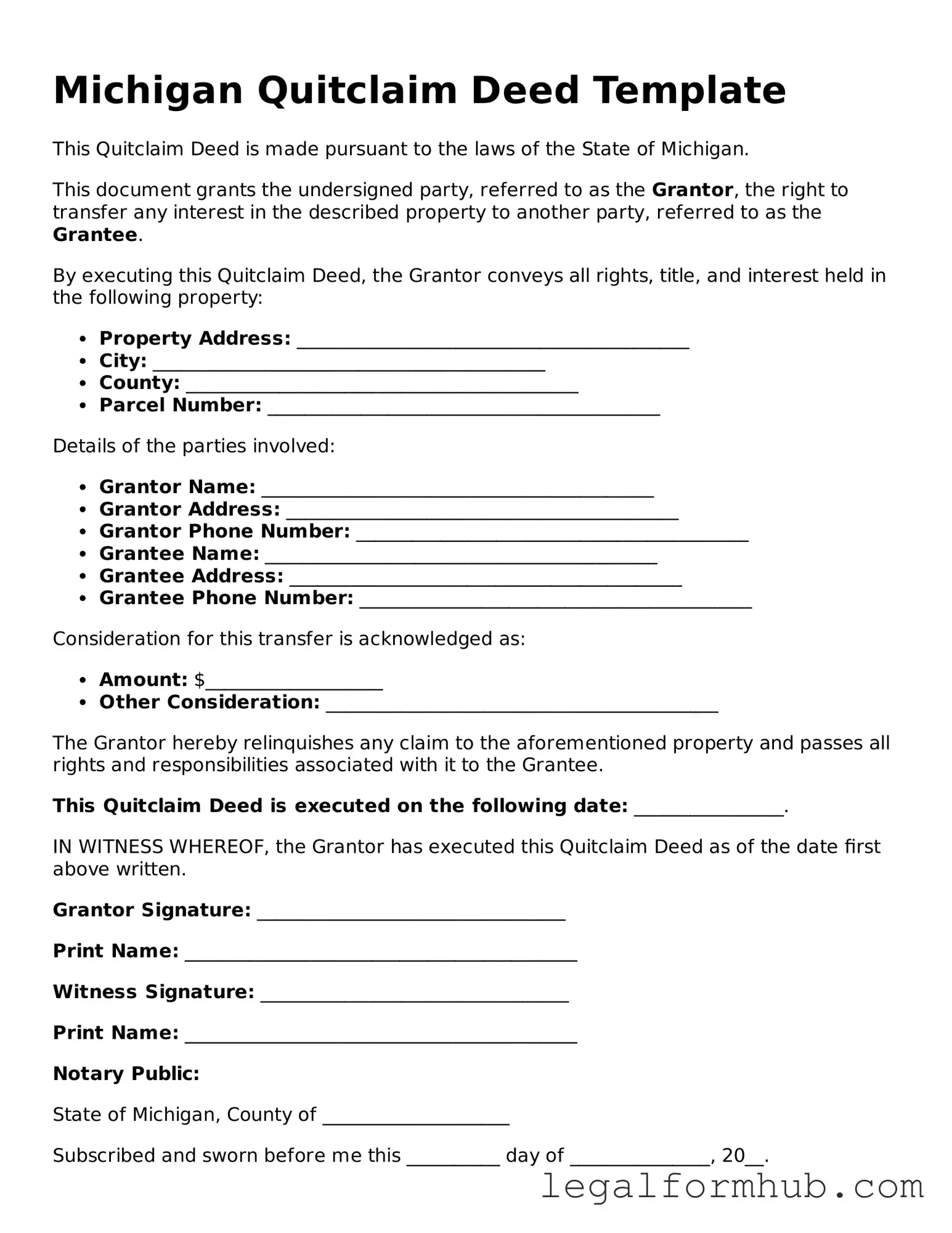The Warranty Deed is a common document used in property transactions, similar to a Quitclaim Deed. However, while a Quitclaim Deed transfers ownership without any guarantees about the title, a Warranty Deed provides a strong assurance that the grantor holds a clear title to the property. This means that if any issues arise regarding ownership, the grantor is legally obligated to resolve them. Buyers often prefer Warranty Deeds when purchasing property because they offer greater protection against potential claims from third parties.
The Bargain and Sale Deed is another document that shares similarities with the Quitclaim Deed. This type of deed conveys property ownership but does not include warranties about the title, similar to a Quitclaim Deed. However, it implies that the seller has the right to sell the property. Buyers may find this type of deed appealing, especially in transactions involving foreclosures or tax sales, where the seller may not be able to provide a full warranty.
A Special Purpose Deed is also comparable to a Quitclaim Deed, particularly in specific situations like transferring property into a trust or to a family member. This type of deed may not offer full title assurances, similar to a Quitclaim Deed, but is often used for specific legal purposes. It allows for a straightforward transfer while meeting particular legal requirements, making it a useful tool for estate planning or asset protection.
When dealing with various types of deeds, it is essential to understand the nuances that differentiate them from one another. For instance, the warranty deed offers comprehensive guarantees regarding property ownership, while the quitclaim deed provides no such assurances. If you find yourself needing to complete related paperwork, such as the EDD DE 2501 form for disability benefits, you can seek guidance on how to proceed by visiting Fill PDF Forms.
The Deed of Trust is another document related to property transactions, although it serves a different purpose. It is used to secure a loan by transferring the property title to a trustee until the borrower repays the loan. While it doesn’t transfer ownership outright like a Quitclaim Deed, it does involve the transfer of title and can be an essential part of real estate financing. Understanding how these documents interrelate can help in navigating property transactions effectively.
The Grant Deed is similar to a Quitclaim Deed in that it transfers ownership of real property. However, a Grant Deed provides certain guarantees, such as the assurance that the property has not been sold to anyone else and that there are no undisclosed encumbrances. This makes it a more secure option for buyers who want some level of protection, unlike the more straightforward Quitclaim Deed.
A Life Estate Deed, while serving a different purpose, shares the essence of transferring property rights. This deed allows a person to transfer ownership of a property while retaining the right to live in it for the rest of their life. Like a Quitclaim Deed, it can simplify the transfer process, but it also creates specific rights and responsibilities for both the grantor and the grantee, making it a unique option in estate planning.
Lastly, a Mortgage Deed, though primarily a security instrument, has similarities to a Quitclaim Deed in that it involves the transfer of an interest in property. When a borrower takes out a mortgage, they grant the lender a security interest in the property. This deed does not transfer full ownership but does convey rights to the lender until the loan is paid off. Understanding these nuances can aid individuals in making informed decisions during property transactions.
